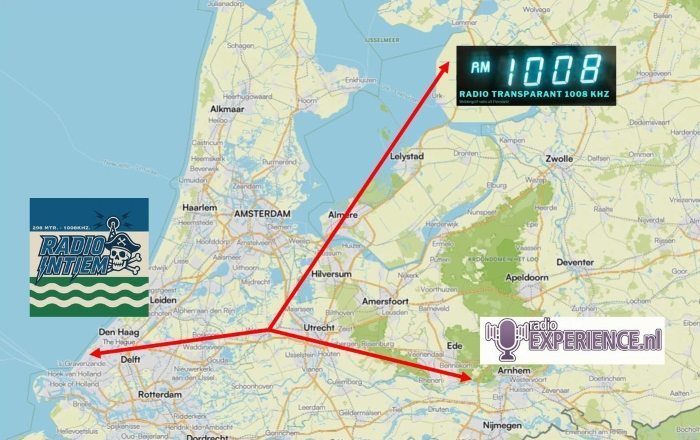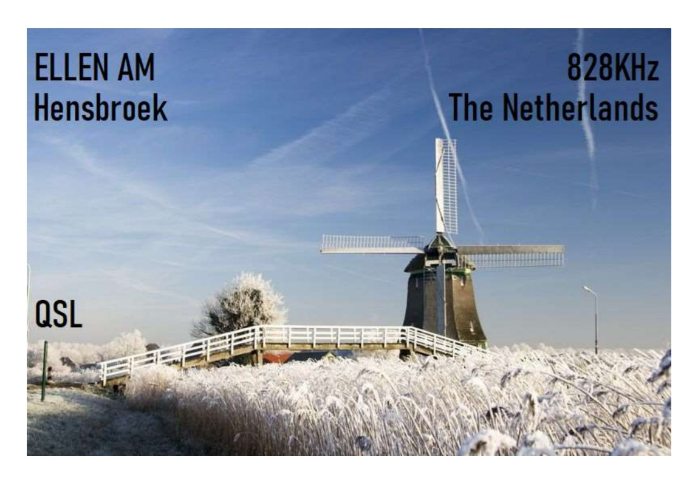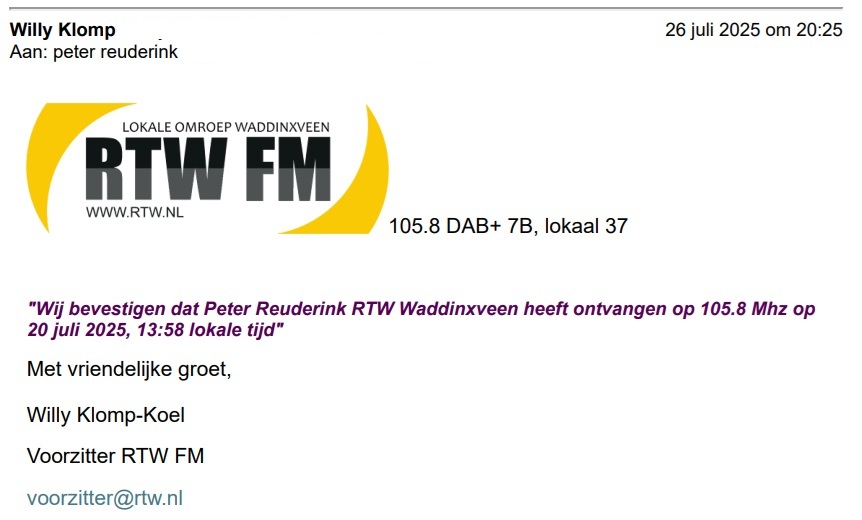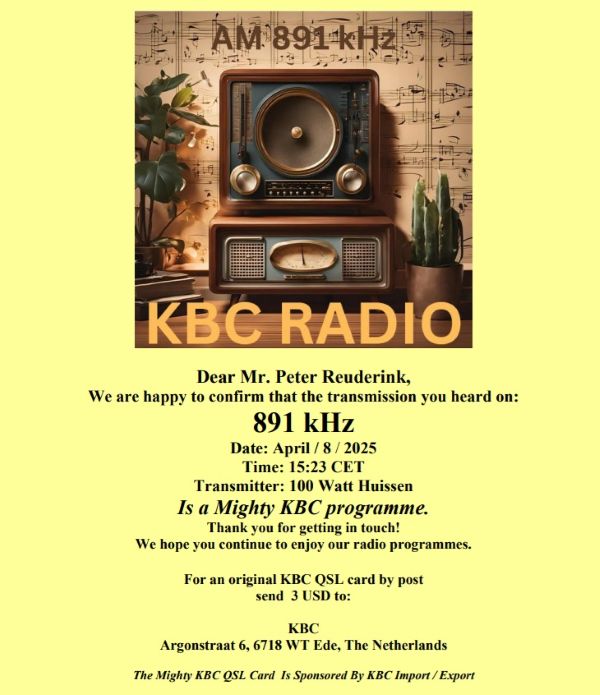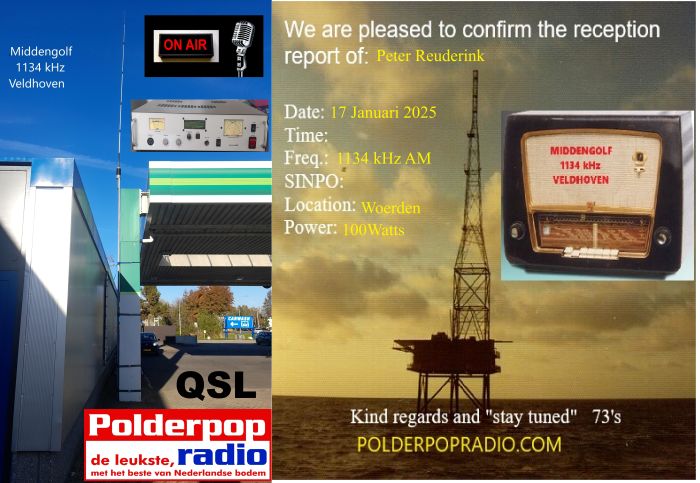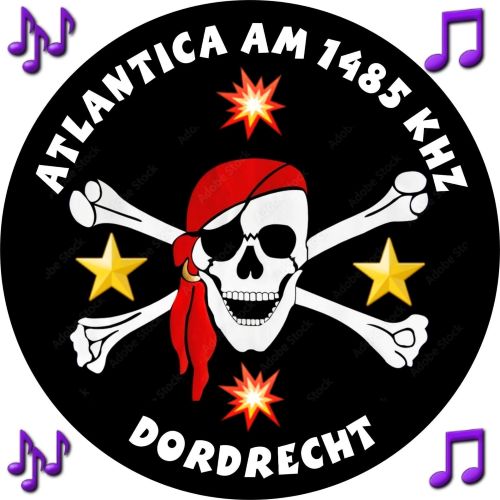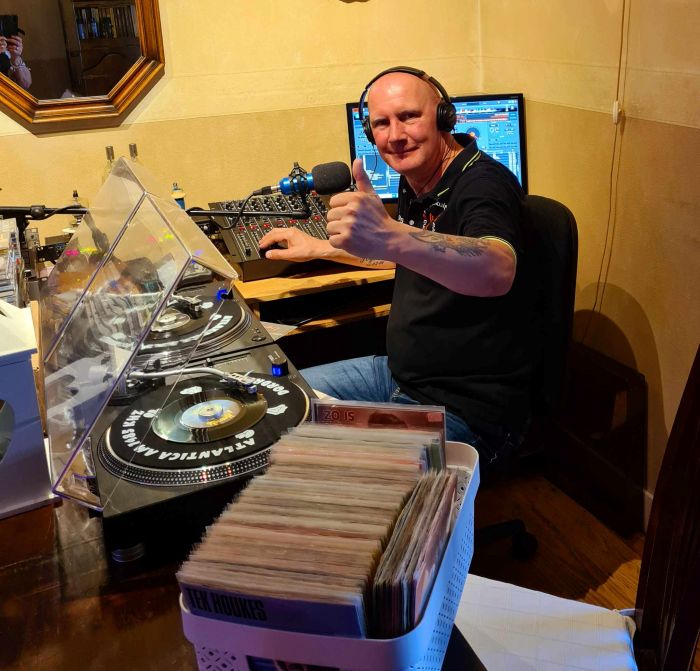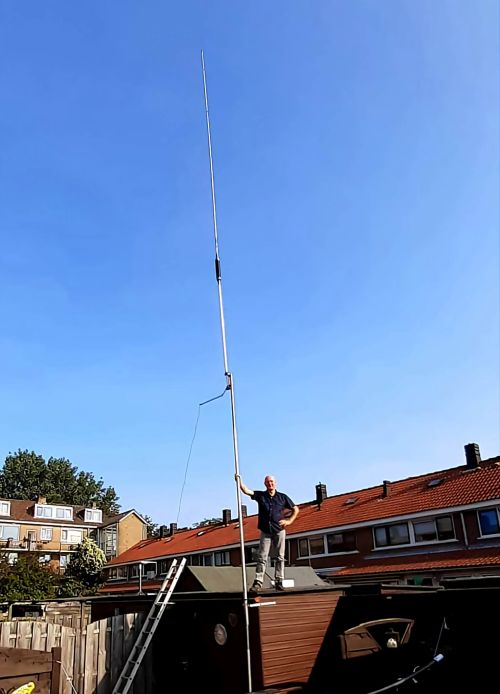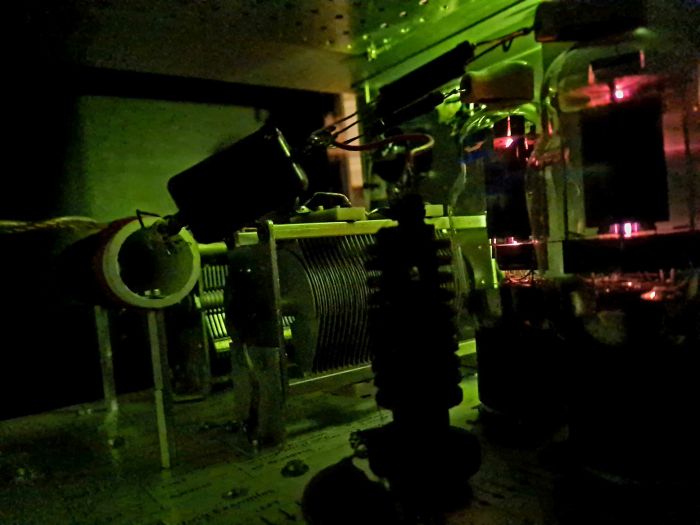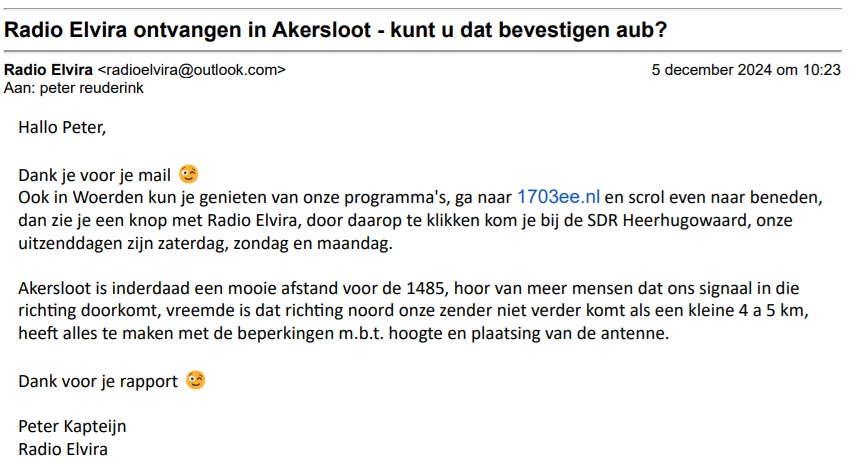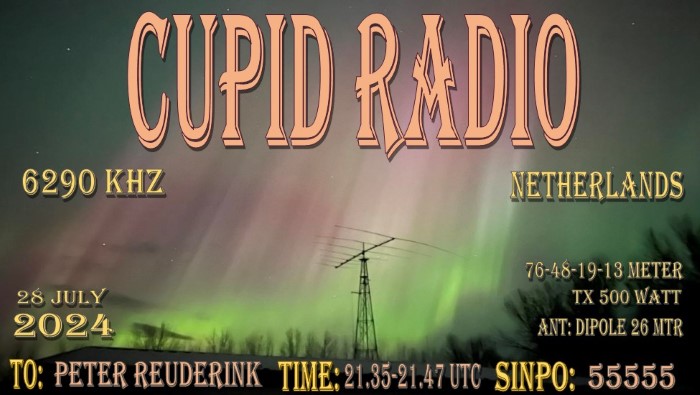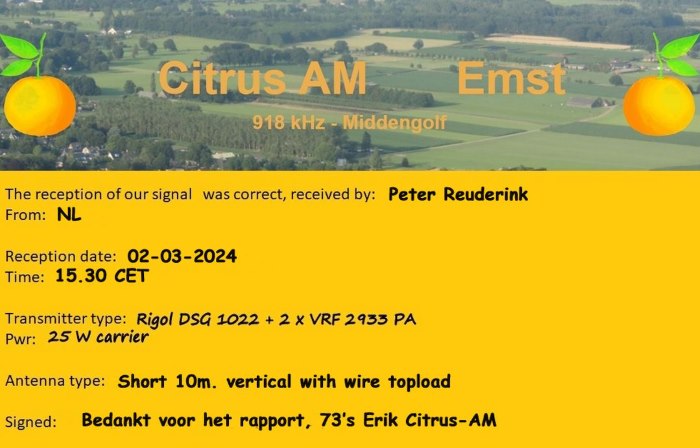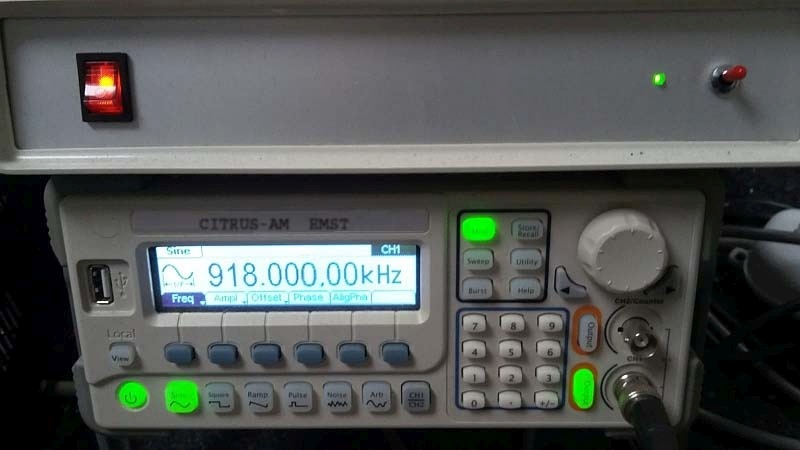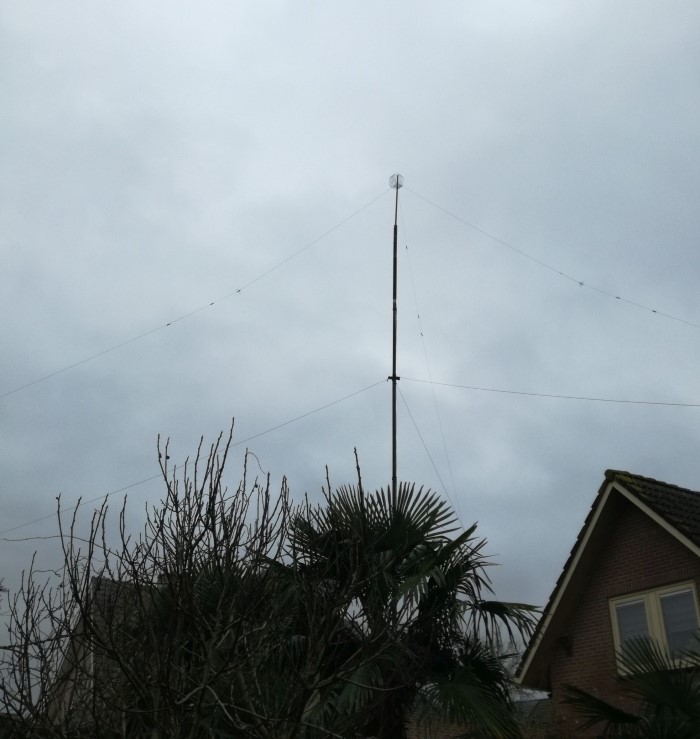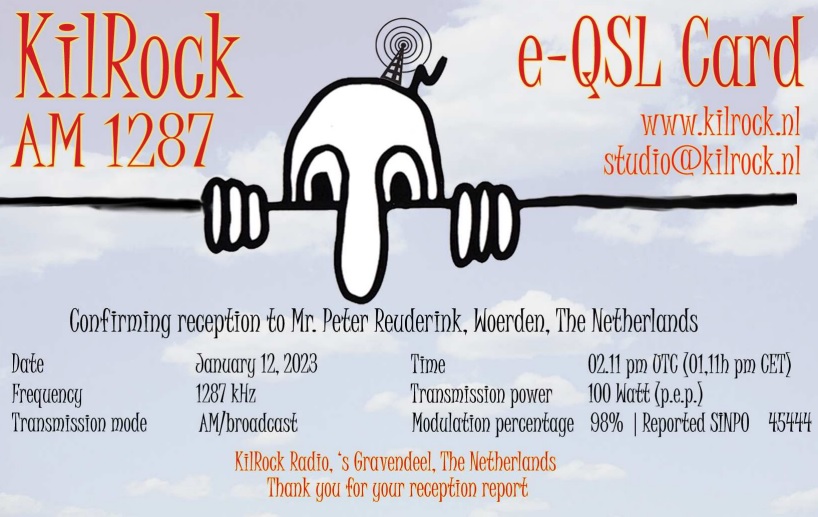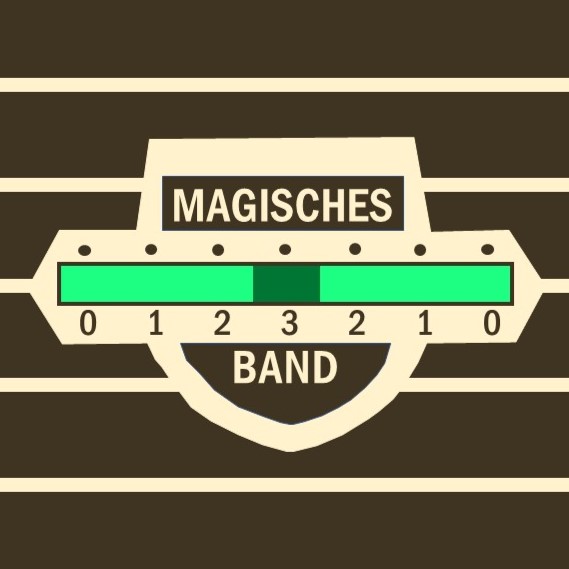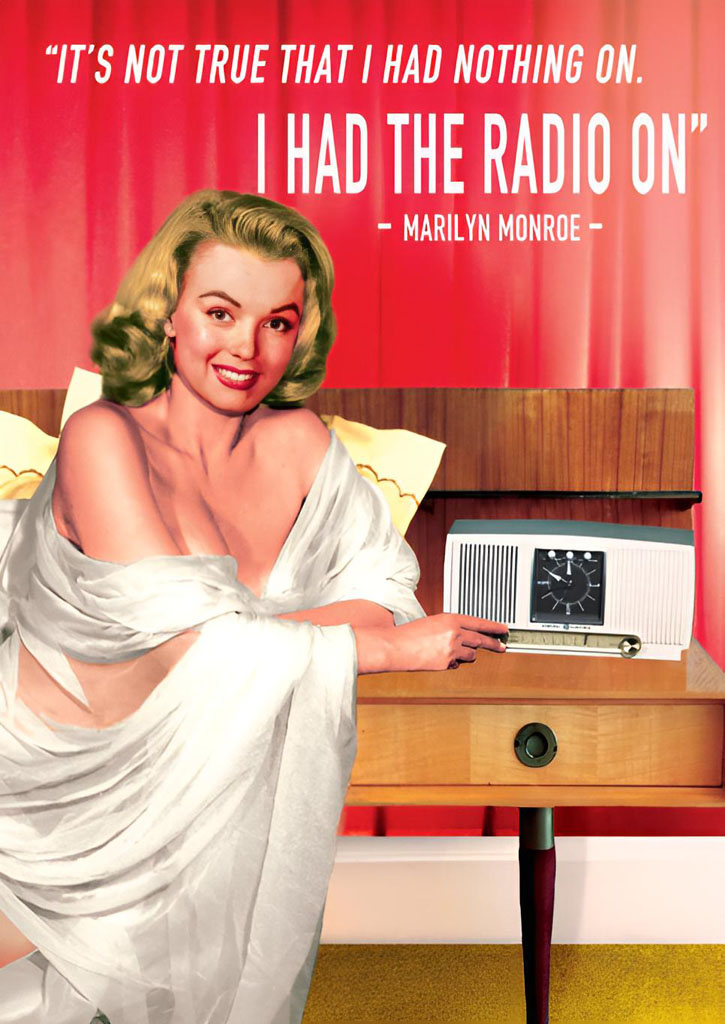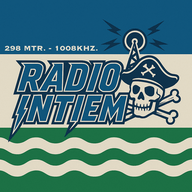
Radio Intiem is a new LPAM station from the village of Monster near The Hague. They started testing two weeks ago, and are broadcasting with 100 W on Saturday only. Cor Hendriks from Radio Intiem ( radiointiem(at)gmail.com ) confirmed my reception report within a day:
Thanks for your email. We restarted two weeks ago after a 30-year hiatus.
We were a pirate FM station from 1984 to 1995, and now we’re legal on AM.
We broadcast only on Saturdays from 7:00 AM to 7:00 PM.
There’s also a stream available; download the My Tuner Radio app.
We’re still in the testing phase.
Greetings from Cor Hendriks of Radio Intiem in Westland.
“You can’t get closer to heaven” is a nice article (in Dutch) about the history of Radio Pirates in Westland, the region with all the greenhouses south of The Hague.
Radio Intiem wasn’t an easy catch. Normally I have the loop antenna 120/300 degrees for transatlantic reception. But it results in Radio Experience from Wageningen being dominant. I’ve often noticed that reception along the river area in the central part of The Netherlands is pretty good. So I turned the antenna 10/190 to get them at the null. But this favored Radio Transparant from Creil, who also have the benefit that their direction is over the water surface of the IJsselmeer mainly.
